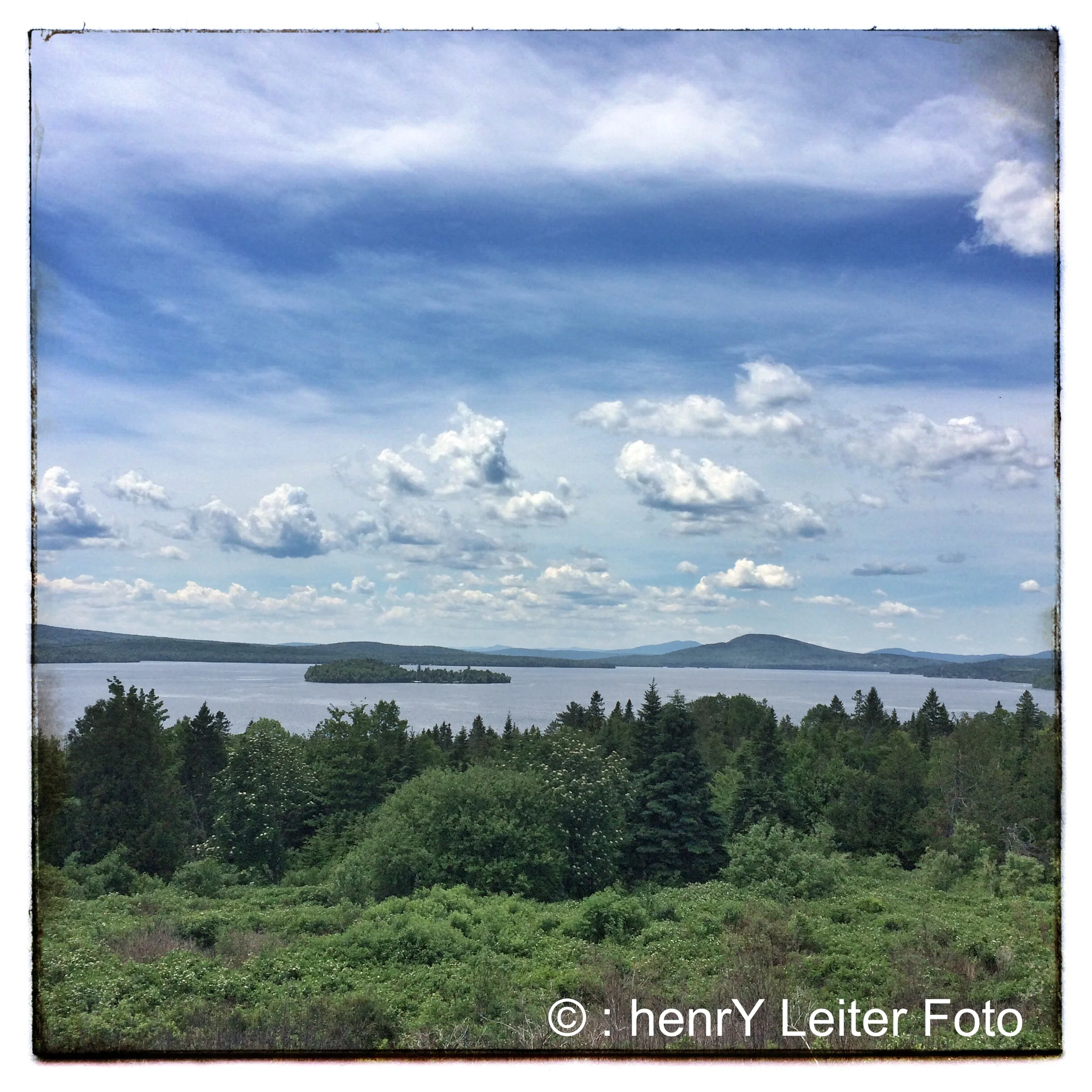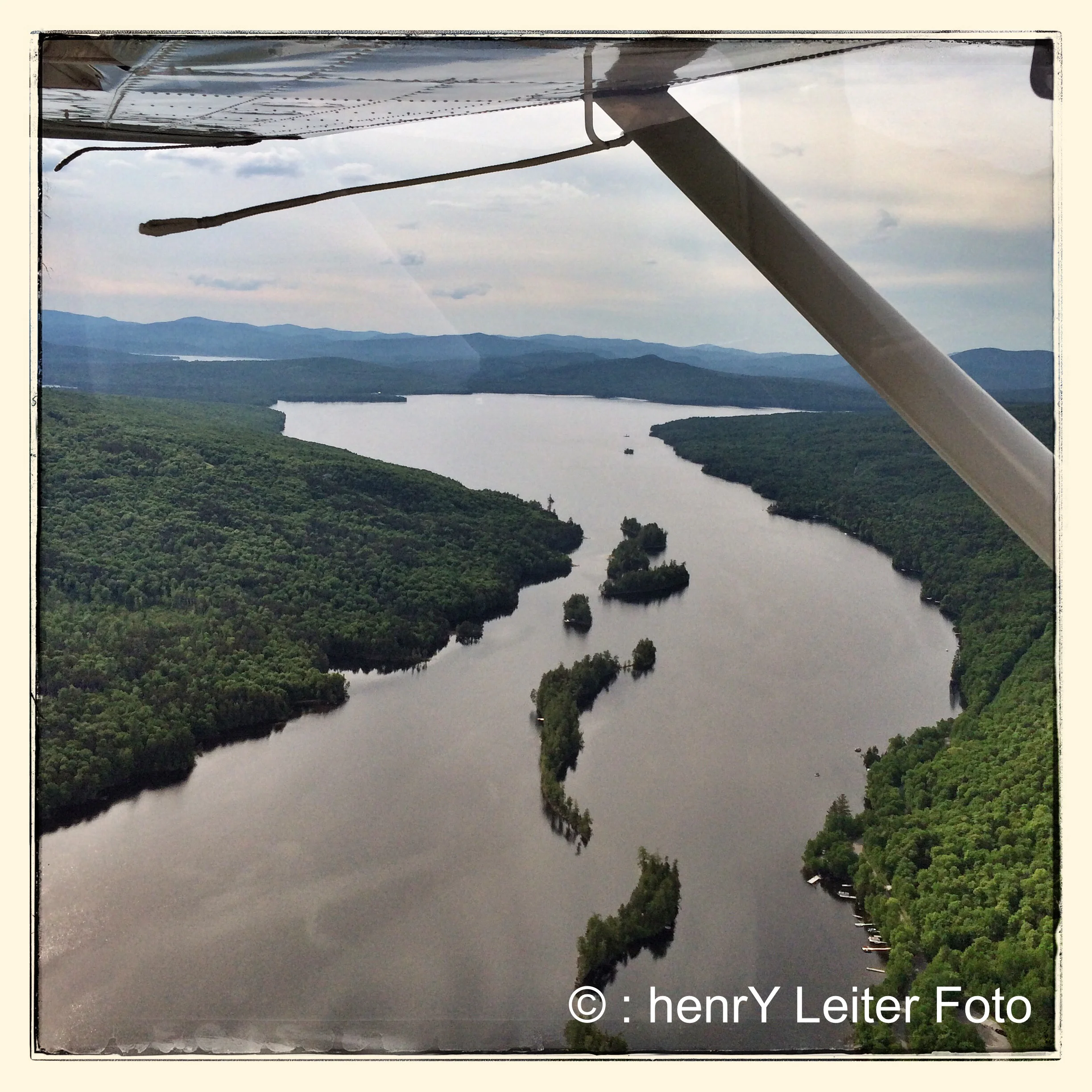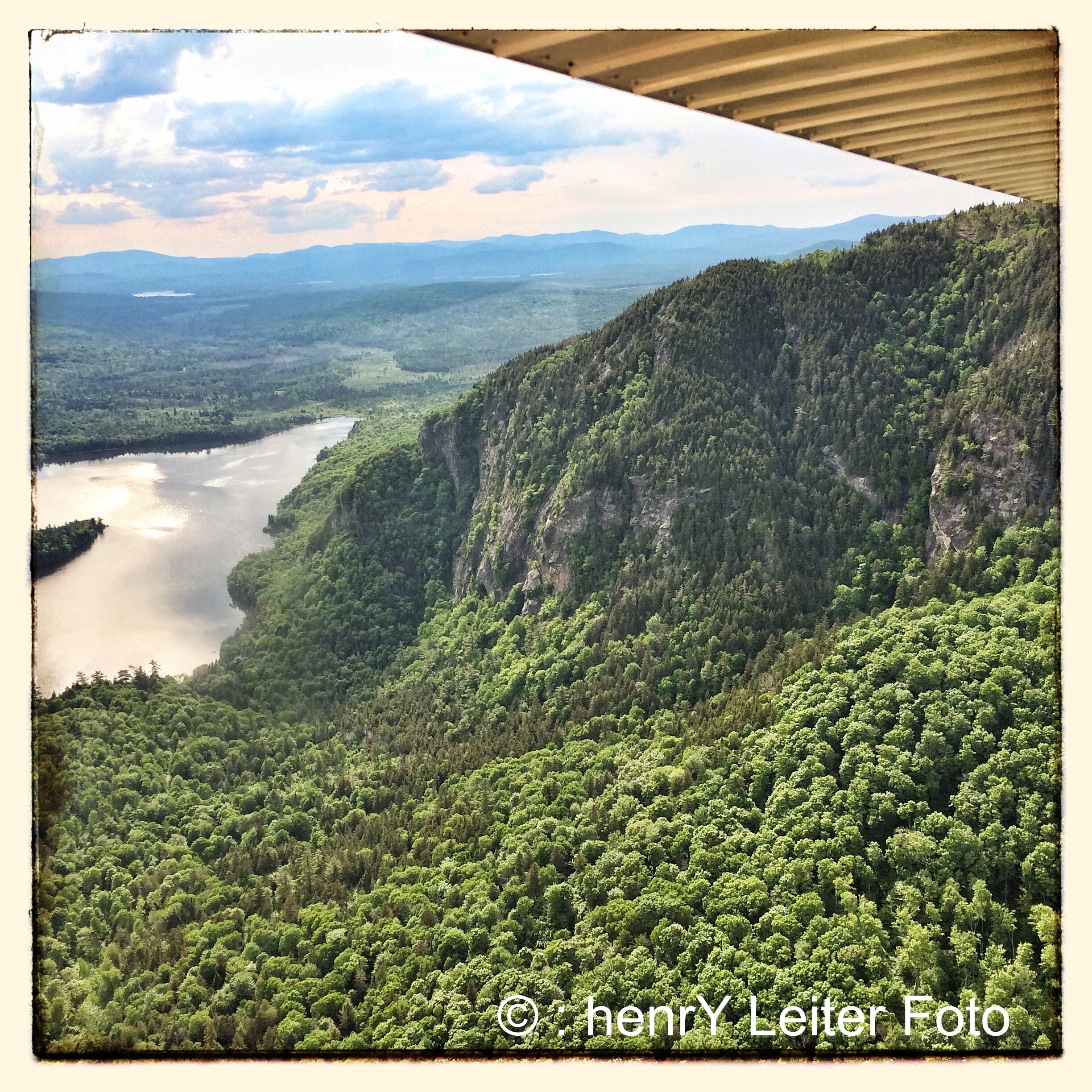Rangeley, Maine - The Legend of the Gray Ghost
Rangeley, Maine
Rangeley is about a three hour drive from Portland and is located in the Northwest corner of Maine near the New Hampshire and Canadian borders. For the past 13,000 years people have been drawn to the area to pursue the fabled Brook Trout that grow to trophy size. i am not a serious angler but i do enjoy fishing occasionally, so we decided to make a trip to this legendary location. Rangeley is the center of the Rangeley Lakes region, which is now a resort area, however we decided to opt for the wilderness camping experience.
Rangeley Lake from the scenic overlook.
We researched the area and found the Cupsuptic Lake Park and Campground who offered wilderness camping sites. These were sites that you were able to drive to and didn't require having to be flown in, or backpacking in to. Since we only had a couple of days this seemed like the best option.
The drive up is very beautiful and scenic. It took us through a few small towns but most of the drive is just trees, mountains, and streams. It gives you plenty of time to ponder the days of yesteryear when people made this voyage. Before the roads, trains, and planes there was the Native American trail that led north from Kennebec and Sandy Rivers. With the dense woods and rocky, rugged terrain it must have been quite an adventure.
Until 1796 the area belonged to the Commonwealth of Massachusetts. That year four men - including James Rangeley Sr. purchased 31,000 acres between the Kennebec River and New Hampshire for timber and mineral rights. The area was inhabited by five different Native American tribes at the time and the lakes were known as the Androscoggin Lakes. Although it was privately owned the Native Americans had the land exclusively to themselves until 1810.
The first "white family" to settle the area was Luther Hoar, his wife, and their eight children. They were from Avon, and in 1817 they walked 26 miles through the woods and snow with all of their possessions on two "moose sleds" and survived on fish and game and lived quite "primitively". The following year, two other families settled near the lake and this began the "Lake Settlement".
When James Rangeley Sr. died he left his share of land to his son James Rangeley Jr. who then proceeded to buy out the other partners. Now in possession of 31,000 acres of land in Maine, in 1825 he led his family up the single horse trail out of Madrid, Maine to make this area his home. Maine became a state in 1820, and in 1837 the area was renamed Rangeley. By 1840 the population had reached 39 families. Rangeley became a small but thriving farming community with a sideline trade in lumber. It wasn't until the 1860's that Rangeley's reputation as a fisherman's paradise really took hold.
Coming into Rangeley on Route 4 north you start to pass all kinds of cabins, summer homes, inns, and resorts. There are views of the Rangeley Lake to the left peaking through the trees, and then a scenic overlook where you can pull your car off the road and really take in the incredible view. Giant fluffy clouds float over our heads and mountains and trees seem to go on forever. Beyond it's reputation for good fishing the views are some of the best i've seen in Maine.
Keith Deschambeault's Seaplane parked at the dock.
As we drove into town we passed a Seaplane parked on the lake. This seemed like the way to see this area. We decided to stop and see who it belonged to and inquire about a tour. The plane belonged to Keith Deschambeault who operates a company in Rangeley called Acadian Seaplanes. Keith has thousands of flight hours in the Alaskan Bush and Maine's rugged coast and inland lakes. We spoke to him and made arrangements to take a flight in a couple of hours after we got our camp set up.
So we set out to find the Cupsuptic Lake Park and Campground. The campground office is located about 12 miles outside of Rangeley. When we arrived at the office there was a vintage VW micro bus in the parking lot that belonged to a father and son who had come for a few days of camping and fly fishing. We paid for our site and the woman who was working in there drew us a rough map of where we will find our spot. i have done car camping all across the country and so i just assumed the set-up would be similar. But in northern Maine when they say "wilderness camping", they mean it!
We had to drive down the road a click further away from town and then turn onto an unpaved logging road. The road at first was pretty level and we drove on for a couple miles kicking up a significant amount of dust. Ahead we could see a giant dust cloud swirling on the road being created by an 18-wheeler hauling a heavy load of timber. He was approaching fast and the road was very narrow, i didn't want to play "chicken" since the winner was pretty obvious. i pulled over to the rugged side as much as i could and the 18-wheeler went speeding by at 60 mph only missing us by what seemed like inches. i couldn't get the window rolled up quickly enough and clouds of dust came bursting into our car. It would appear that these logging trucks were in charge on these back roads.
We continued down the road and it became progressively more rough. Giant rocks were scattered so densely it was impossible not to hit them as we rolled along. i own an all-wheel drive Honda Element and it became pretty clear that these cars weren't not meant for this terrain. As we bounced along at a very slow speed the suspension began making all kinds of squeaks and sounds. It was only about 7 or maybe 8 miles into the forrest but it took us over 30 minutes to reach our destination. But it was worth it, our campsite was not close to anything except a "Moose Bog". It's nice that they don't make the sites on top of each other. You really get to experience camping in the wilderness all alone (except for the Moose, Bears, Bull Frogs, Mosquitos etc.).
We got our camp set up to the symphony of Bull Frogs in the bog and through the swarms of mosquitos that were trying to eat us alive. These must be a super strain of mosquitos, the Deep Woods Off wasn't keeping them away and they were biting us right through our clothes. But for the beautiful scenic view and serenity of the Maine woods i was willing to donate a few pints of blood. It made me think about all the people who had summered in the Rangeley area over the years and that these mosquito families had been biting prominent people for many years. People like president Herbert Hoover, who used to summer there.
The Gray Ghost fly tied by Carrie Stevens in 1924.
In 1924 a woman named Carrie Stevens, a self-taught fly tier from Upper Dam, Maine wrote, "I made another cast and gave my fly three or four lively skips when this large trout struck it and dashed away at a terrific speed. I expected any moment it would run out all my line or reach the foaming white water before i succeeded in stopping it." This fish she caught on a fly she tied of her own design won second place in the 1924 Field & Stream Fishing Contest. The fly she used was known as the Gray Ghost. Carrie originated well over 150 patterns that have been extremely successful in luring fish in the Rangeley area. Now collectors seek out original Carrie Stevens streamer flies and pay many hundreds of dollars for a fly that once sold for less than a dollar.
The late 1920's and 1930's were known as the "Golden Age" for the hotels and larger sporting camps in the Rangeley area. Families from large cities on the East Coast would "summer" there. During this time Rangeley met it's visitors sophistication by bringing in chefs, silent movies, orchestras, and ballroom dancing. But World War II changed the dynamics of the area. People stayed home to devote time to the war effort. At the end of the war there was a noticeable change in previous trends of summer vacations. The vacationing public was becoming more mobile and were no longer content to stay in one place for an extended period of time. Larger hotels lost popularity to motels and the cabins of public sporting camps and cottage communities were sold off to individual owners to use as summer homes. This ended the prosperous hotel era of Rangeley.
We made our back into town to meet our Seaplane pilot Keith Deschambeault. My partner Erin had never flown in a small single engine plane and i could sense her anxiety as she studied the small aircraft floating on the lake. It was a beautiful day with hardly any wind so i was confident it would be a smooth first ride for her. We boarded the plane and Keith started the engine and we started skiing across the lake and eventually lifted off. As we drifted above the tree line and the landscape began revealing itself i knew we made the right choice for seeing the area. You really start to see how far out in the wilderness you are as buildings and roads start to disappear.
View from the Seaplane of the Rangeley Lakes Region.
He pointed out several locations he flies people to that cannot be reached by roads. The natural beauty of the land was truly breath taking. We flew around cliffs and over so many different bodies of water i couldn't keep track. He had country music playing through the earphones and was telling us stories about all of his adventures flying and landing in the Maine wilderness. We banked around a cliff and then over a pond as he took the plane down close to the tree line to show us a small pond that had at least six Moose and a deer hanging out. He told us of a time he landed on that pond and realized that it wasn't deep. i guess the Seaplane only needs at least five and a half inches of water to land on, but this pond was very shallow. He took the plane down for the landing and mud blasted all around him but he was able to maneuver in such a way he did a 180º turn as he landed and he was able to take back off and not get stuck.
Seaplane view of cliffs in Rangeley Lakes Region Maine.
Keith landed the plane and we made our way back to the dock. He is an excellent pilot and an amazing tour guide. He is very knowledgeable about the area and the history of Rangeley. After thanking him for that incredible experience we made our way back into the wilderness to our campsite. The Bull Frogs were even louder and seemed to have multiplied in the bog. i built a fire and we sat there awaiting the sun to set. As it grew darker the forest seemed to come more alive. My hearing became more acute and the rhythm of the Bull Frogs created an amazing atmosphere. Unfortunately the skies clouded up so we couldn't see any stars, however i'm sure they would be amazing as there is virtually no light pollution. We made some dinner over the fire and had a few beers and settled in to our tent for the night.
We fell asleep quickly enough enjoying the soothing sounds of the forest. i thought i heard a Moose sneeze at one point but that only made me feel content that we were a long way from civilization. At about one in the morning the rain came. It was dumping buckets of water on our tent and yet the Bull Frogs continued to sound their strange rhythms. The rain continued all night and by morning the tent was starting to flood. We packed up the gear and headed into town to try and find some early morning coffee and breakfast. We made or way to the BMC Diner in Rangeley.
The rain did not let up the entire morning so after breakfast we decided that we would have to come back and try fishing another time. The style of vacations has changed in Rangeley since the "golden era" but the region is still a highly popular summer destination. The historic Rangeley Inn (formally the Rangeley Tavern) still stands downtown as a symbol of the Hotel Era. If you are looking for an incredible adventure and want to take a step back in time visit Rangeley. i will most definitely be returning to try my luck with the legendary Brook Trout.
Written by : henrY Leiter
If you would like to see more photography work by : henrY Leiter Foto please visit the portfolio pages at: www.henryfoto.com





